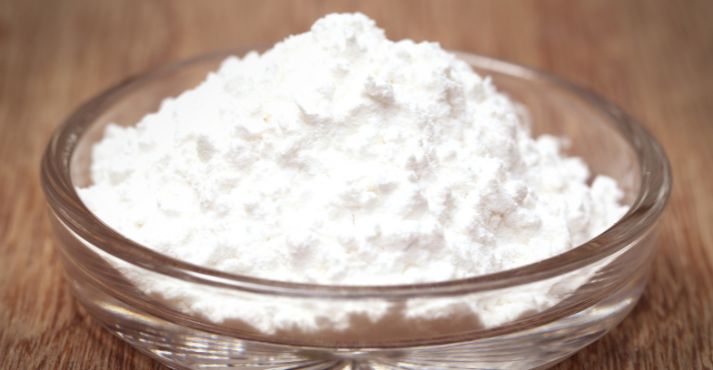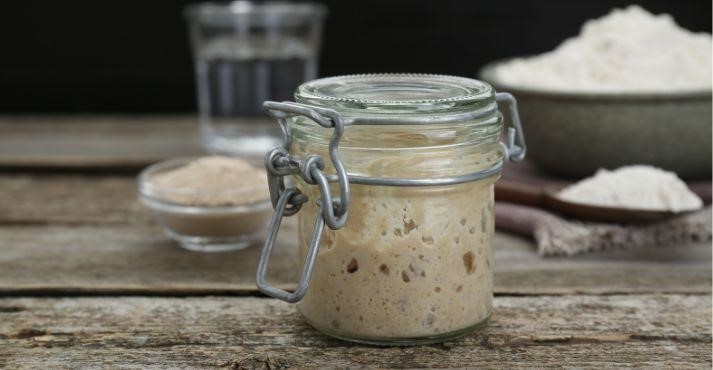Baking is both an art and a science, so understanding your ingredients is essential. Two such ingredients, baking powder, and baking soda, play crucial roles in making baked goods rise and achieve the perfect texture.
Though they might look similar, they have different compositions and uses in the kitchen. Knowing the difference between baking soda and baking powder is essential for any baker looking to perfect their recipes, from novice home cooks to professional chefs.
Let us examine the baking powder and baking soda debate and help you polish your baking skills by choosing the right option for your needs.
What is Baking Powder?

Baking powder is a complete leavening agent, meaning it contains both the base (usually sodium bicarbonate) and acid needed to produce carbon dioxide gas.
When moisture and heat are applied, baking powder lightens and softens the texture of baked goods. This reaction makes cakes, cookies, and pastries fluffy and light. Understanding what baking powder does helps bakers use it more effectively in their recipes.
There are two main types of baking powder: single-acting, which reacts at room temperature when wet, and double-acting, which reacts once more in the oven as it heats. This versatility makes it a favorite in kitchens around the world.
The double-acting variety, in particular, is praised for its reliability and consistency, making it a staple in recipes that demand precision, such as soufflés and angel food cakes.
What is Baking Soda?

Baking soda, or sodium bicarbonate, is a base that requires the presence of an acid and moisture to activate and produce carbon dioxide. Its leavening power is firm but not stable, meaning it reacts quickly and should be baked right after mixing to avoid deflating your dough or batter.
Baking soda is incredibly versatile, used in everything from cookies to cakes, where it works with ingredients like yogurt, lemon juice, or vinegar to create the perfect rise.
The purity of baking soda makes it a unique and powerful leavening agent. It’s often used in baking and various cooking methods to enhance texture and color, such as in browning meats and making crispy vegetables.
Its ability to regulate pH levels makes it essential in more than culinary arts; it also plays a role in household cleaning and personal care.
Baking soda adds more than flavor—it brings a science experiment to your baking adventures and is frequently used to prepare various popular Asian foods.
Key Differences Between Baking Powder and Baking Soda
Understanding the critical differences between baking powder and baking soda is essential for every baker, from amateurs to seasoned professionals.
These ingredients, though similar in appearance, play distinct roles in baking due to their chemical properties and reactions. Here’s a deeper look into how these differences can affect your baking results:
1. Chemical Composition:
Baking soda is pure sodium bicarbonate, a simple base that requires an acidic ingredient like lemon juice, yogurt, or buttermilk to activate. In contrast, baking powder is a mixture of sodium bicarbonate and an acid, typically cream of tartar, plus a drying agent like cornstarch.
This composition allows baking powder to react and produce gas bubbles without adding external acidic ingredients, unlike baking soda, which needs them to activate. This fundamental difference is crucial in deciding which to use in a recipe.
2. Activation:
Baking powder begins to react and release carbon dioxide gas as soon as it gets wet and then continues to react when exposed to heat.
This dual-phase reaction makes it ideal for recipes that require a consistent and controlled rise, such as cakes and biscuits. This is why bakers mainly use baking powder instead of baking soda.
Baking soda, however, starts working immediately upon mixing with acid and moisture.
This immediate reaction means baking soda recipes should be baked immediately to prevent the batter from losing its leavening power. So, activation is the primary differentiating factor for baking soda vs. baking powder.
3. Leavening Power:
Due to its double reaction (once when moistened and again when heated), baking powder provides a more reliable rise. This makes it suitable for baked goods that need a specific texture and height, like scones and layered cakes.
Baking soda, with its single, quick reaction, is more effective in recipes that contain natural acids and don’t require a second rise, such as pancakes and cookies. Additionally, baking soda is about three to four times stronger than baking powder, so you need less when substituting one.
4. pH Balance and Flavor:
Whether you use baking powder or baking soda can significantly affect the pH balance of your batter. Baking soda, being alkaline, can cause recipes to taste metallic if not balanced with enough acidic ingredients.
Baking powder, with its built-in acid, maintains a more neutral taste. So, when it comes to baking powder vs. soda, flavor should also be kept in focus.
5. Usage in Recipes:
Like cakes and cupcakes, recipes that need a light, delicate texture often use baking powder.
In contrast, recipes with a natural acidic tone, like chocolate cake and buttermilk pancakes, typically use baking soda. Understanding this can help prevent common baking issues like overly dense cakes or overly spread cookies.
Choosing the Right Leavener

When deciding whether to use baking powder or baking soda, bakers should consider the following factors:
1. Recipe Acidity
The natural acidity in ingredients like buttermilk, lemon juice, or yogurt can activate baking soda, making it the ideal choice when your recipe includes these elements.
This interaction balances the flavor and ensures the proper lift in recipes such as buttermilk pancakes, lemon muffins, or any other baked good that benefits from a tangy taste.
This helps bakers decide when to use baking soda vs baking powder, ensuring that each item has the perfect texture and rise.
2. Desired Rise
Baking powder is essential for recipes that require a significant rise without any acidic ingredients. Its balanced formula, which includes an acid and a base, ensures that baked goods will be light and airy.
This characteristic makes it especially useful in cakes, certain cookies, and other desserts where a delicate, consistent texture is critical. For those looking to achieve an even, predictable rise, baking powder is a reliable choice, unlike baking soda, which has a quick reaction.
3. Convenience
For beginners, baking powder instead of baking soda is the better choice. Baking powder is less risky because it doesn’t require balancing the acidity for activation. This makes it a foolproof option for consistent results, appealing to those who are new to baking and looking for an easy, fail-safe option.
Baking powder allows more flexibility in recipe selection and execution, making it ideal for a wide range of baked goods.
4. Taste and Color
Due to its alkaline nature, baking soda can affect the flavor and color of baked goods. If not properly balanced with an acid, it can leave a metallic taste and cause a yellowish color in white cakes or other pale items.
Baking powder, on the other hand, usually results in a neutral taste and color, making it a better choice for maintaining the desired appearance and flavor of delicate baked goods.
5. Recipe Adaptation
Consider the leavening agent carefully if you’re modifying a recipe or experimenting with new ones. For instance, if you substitute baking soda for baking powder, you might need to adjust other acidic components in the recipe to maintain the correct balance and ensure proper leavening.
6. Shelf Life and Storage
Baking soda has a longer shelf life than baking powder because it is a single compound, sodium bicarbonate. In contrast, baking powder can lose effectiveness over time because the acid in the compound can start reacting even in storage.
Always check the potency of your baking powder with a quick test in warm water; it should bubble vigorously if still active.
Tips for Substituting Baking Powder and Baking Soda
Substituting one for the other can be done, but it requires careful calculation and understanding of their unique properties:
- To substitute baking soda for baking powder, you need about a quarter teaspoon of soda for every teaspoon of baking powder, and you must add an acidic ingredient to the mix. This is because baking soda alone lacks the acid that baking powder typically provides to cause the reaction needed for leavening.
- Replacing baking powder with baking soda is more complex because you need less baking soda due to its higher potency. The typical ratio is about one teaspoon of baking powder for every 1/4 teaspoon of baking soda. Additionally, you’ll need to add an acidic component like cream of tartar to mimic the acid-base reaction.
Note: These substitutions can significantly alter the taste and texture of your baked goods and are generally not recommended for novice bakers.
Baking Powder vs. Baking Soda (FAQs)
Is baking soda edible?
Yes, baking soda is edible and commonly used in cooking. Baking soda and baking powder are both safe when used in proper amounts to leaven and neutralize acidity in recipes. It’s also used in various household and personal care applications due to its mild abrasive and natural deodorizing properties.
Can I substitute baking soda for baking powder?
Yes, but with caution. For every baking powder needed, use a quarter teaspoon of baking soda mixed with half a teaspoon of vinegar or lemon juice. Adjust the recipe to accommodate this change.
Conclusion
Wrapping up our journey into baking, we’ve uncovered the distinctions between baking soda and baking powder, the unsung heroes of many delicious recipes. Understanding their unique roles and the chemistry behind them is like having a secret ingredient for culinary success.
In a nutshell, baking soda and baking powder are more than just pantry staples; they’re the chemistry wizards that make our cookies rise and our cakes fluffy.
The unique functions of these leavening agents and the chemical reactions they undergo during baking are crucial to achieving culinary excellence in your kitchen.
As we conclude our exploration, remember the practical applications of these ingredients. Whether aiming for a perfectly risen loaf of bread or a batch of tender muffins, knowing how to leverage baking soda and baking powder will set you on the path to baking mastery.





























